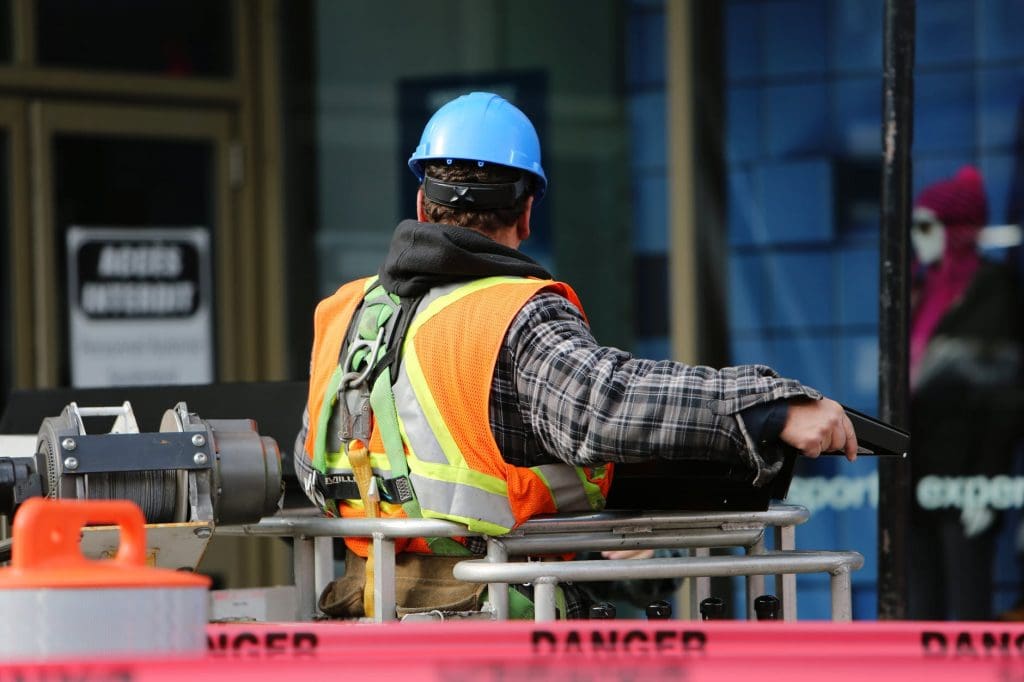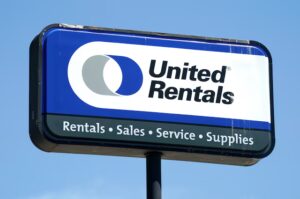By James Waite Rental Management Magazine
DECIDING WHETHER TO RENT OR NOT RENT PERSONAL FALL PROTECTION EQUIPMENT
QUESTION: MY COMPANY RENTS BOOM LIFTS, AND WE ARE WONDERING WHETHER TO RENT OR ONLY SELL PERSONAL FALL PROTECTION (PFP) EQUIPMENT. WE KEEP HEARING DIFFERENT OPINIONS REGARDING THIS — SOME SAY WE SHOULD ONLY SELL IT; OTHERS SAY WE SHOULD RENT IT; AND OTHERS SAY WE SHOULD JUST INCLUDE A HARNESS WITH ALL RENTALS. SOME SAY THEY ONLY CHARGE FOR IT IF THE CUSTOMER OPENS THE PACKAGE. SO, DO YOU HAVE AN OPINION ON THIS?
Answer: This is a hotly debated issue in the equipment and event rental industry. As you probably know, the Occupational Safety and Health Administration (OSHA) requires employers to ensure their customers use fall protection whenever they work at elevations of 4 ft. or more in general industry, 5 ft. or more in shipyards, 6 ft. or more in construction, 8 ft. or more in longshoring operations and any height when working over dangerous equipment and machinery. For our purposes, one or more of these will likely require harnesses and lanyards whenever boom lifts are in use.
For most, the answer to the question of whether to rent PFP depends on a combination of factors, including customer base, location, competitive environment, risk tolerance and more. So, let’s go through a few of the most commonly raised issues in an effort to help you reach an answer that best suits your operation.
Customer base. Among the most important issues is your customer base. If it consists of mostly contractors, they are likely to understand how dangerous working at height can be, know how to use a lift safely, understand and appreciate the need for Using PFP, know how to use PFP and already have PFP.
If, however, your customer base includes any significant number of non-contractors and homeowners, none of the above may be true, which can make renting lifts to them significantly more dangerous, in addition to being much riskier for you as an equipment lessor.
Competitive environment. Local competition often has a way of impacting safety decisions. This can be a good thing if it results in motivating others to augment their safety protocols; it can be an exceedingly unhealthy thing if it does the opposite. For example, if a local competitor offers older and/or more lightly inspected and maintained equipment and/ or PFP at a lower price point, customers who do not know the difference may tend to commoditize these offerings and choose the lower rate. Ironically, because commoditization so commonly results from a lack of knowledge regarding products and safety, the least qualified users are often the most likely to rent the riskiest assets — a potentially deadly combination.
Risk tolerance. Risk tolerance is, of course, a fundamentally personal and company-specific issue which can take many forms, depending on the perspective of the lessor.
For example, a large or very large rental company with hundreds or perhaps thousands of employees, millions of dollars’ worth of assets and a customer base consisting of mostly contractors may take the view that its risk would be unnecessarily increased if it were to rent PFP. Its risk analysis might look something like this:
Do we have competent people (as required under OSHA 1910 and 1926) to perform inspections of PFP and ensure its safety each time it comes off rent?
Answer: Perhaps, but it varies from person to person, and policing it will be difficult and somewhat expensive.
Will we be able to keep track of how many times each item of PFP has been rented and when it should be destroyed and replaced?
Answer: Perhaps, but this will require even more time and expense.
Do we have time to do the above in the course of a very busy workday?
Answer: Perhaps, but this will require even more time and expense.
Will we remember to do that each time, and what is the likelihood that we might miss something as a result of being tired, preoccupied, busy with other tasks, etc.?
Answer: Perhaps, but employees are also human and may forget occasionally.
What is the cost to train our employees?
Answer: It depends, but training, and the employee time required for it, can be substantial.
What is the cost of having our employees perform such inspections each time, rather than doing something else?
Answer: It will not likely be extraordinarily time consuming, but the total cost of the additional employee time across all of our locations is likely to be significant.
What is the potential downside if we miss something or if some PFP items deteriorate more quickly than expected?
Answer: It is enormous.
Is a customer death or critical injury possible?
Answer: Yes.
Are we likely to be sued if an injury occurs?
Answer: Yes.
Is the suit likely to be for a significant amount (e.g., over $1 million)?
Answer: Yes.
Are our attorneys’ fees likely to be significant?
Answer: Yes.
Can we simply sell only new PFP, and thereby eliminate most of the above risks?
Answer: Yes.
Can we simply sell only new PFP, and thereby eliminate most of the above risks?
Answer: Yes.
What is the potential financial upside of renting PFP by comparison?
Answer: Limited; the return is tiny compared with the organization’s other rental assets, and in any event, our customer base consists of mostly contractors who don’t need to rent PFP.
Is someone at the top of the organization likely to lose his/her job if a catastrophic loss occurs?
Answer: It depends, but it’s more likely in large organizations than it is in smaller ones.
Do we have millions of dollars’ worth of potential asset exposure?
Answer: Yes.
Will our insurance cover this?
Answer: Probably, but possibly not all of the exposure, and in any event, not for long, and certainly not inexpensively, if more than one or two claims arise.
Are we likely to win?
Answer: It will depend on the facts and circumstances, but these cases tend to generate extremely sympathetic plaintiffs, and in some cases, emotionality can yield massive jury awards, particularly in urban areas.
Probable outcome: A large equipment rental company is likely to refuse to rent PFP, and instead, only sell it.
Small and medium-sized companies. This analysis tends to change as the needle moves toward smaller and medium-sized rental companies, due to a wide range of factors, including the following:
- They are often very familiar with their customers and their customers’ capabilities.
- They tend to deal with more non-contractors or homeowners.
- Their customers often don’t have PFP.
- Their customers often cannot or will not spend $90 to $120, or perhaps more, in order to purchase new PFP.
- The same lack of knowledge that motivates some customers to rent riskier assets often also motivates them to unwittingly take extraordinary, even life-threatening, risks like foregoing PFP, in exchange for what, in the big picture, amounts to a relatively small savings.
- Left unremedied, this combination of factors can result in physical, legal and financial catastrophe for both the customer AND the rental operator.
Options: What to do then? Obviously, this tends to leave small and medium-sized equipment lessors with only a few options:
- Refuse to rent boom lifts to any customer unless he/she either proves that he or she already has the necessary PFP or purchases new PFP from the lessor.
- Make used PFP available, either free of charge, or in exchange for a rental rate of typically between $20 and $40 per rental.
- Provide new or used PFP with each rental in a sealed package, and charge for it if, upon return, the lessor discovers that the package has been opened. Note: The lessor will need to make it clear in the rental contract whether the charge will be based on the rental price or the sale price of the PFP.
- Let the customer make the determination regarding whether to use and/or pay for PFP.
Possible outcomes: As you can see, this combination of factors can yield any number of results based on the specific circumstances faced by a given equipment rental operation. For a long list of reasons, those results are likely to be very different from the results generated by the same analysis when performed by a large rental operation.
SCHEDULE A CONSULTATION WITH JAMES WAITE
For most small and mid-sized equipment lessors, refusing to rent without proof of PFP, while certainly the safest from a legal perspective, will substantially reduce the ability to rent boom lifts and may place them at a significant competitive disadvantage locally. Letting the customer make the determination, while not illegal, is at the opposite end of the risk spectrum, and depending on the knowledge and experience of your customer base, may result in serious injuries and/or fatalities.
Providing new or used PFP in a sealed package makes sense for some legally and operationally, but the potential PFP charge can motivate customers hoping to save a few dollars to avoid using PFP. Consequently, it may prove nearly as risky as letting the customer make the determination.
For many, this leaves renting PFP as the only realistic, if imperfect, alternative. This is because it significantly enhances safety, reduces legal exposure, makes needed equipment available to customers at rates most of them will pay, and provides an additional, albeit limited, revenue stream, with relatively little out-of-pocket cost to the rental operator.
For those who do rent PFP, careful management, tracking, inspection, assessment and timely removal of the PFP from service remain critical. Most of our clients tell us they never send out used PFP more than eight to 12 times before removing it from service and destroying it.
What remains true is that working from heights is one of the most dangerous activities in which customers can participate. For that reason, anyone renting any type of lift needs to be advising customers in writing, at the time of rental, that PFP is required. After an accident, few customers will remember that you warned them.
Rental operators should have their customers sign a separate waiver, which includes specific warnings, acknowledges the risks, and contains the customer’s agreement to indemnify, defend and hold harmless the rental company with respect to any and all associated injuries, including death, and property damage.
Ultimately, although we always advise caution, we recognize that rental operations differ substantially across a wide range of factors, which makes renting PFP the best/safest option in some cases, but not in others.
For those of our clients who are considering renting PFP, we advise them to consider their particular operations, circumstances, equipment, locations and customer bases, and weigh the above options carefully after reviewing the applicable American National Standards Institute (ANSI), American Society of Safety Professionals (ASSP) and OSHA requirements. This is not a one-size-fits-all determination.
VIEW ARTICLE ON RENTAL MANAGEMENT MAGAZINE WEBSITE



